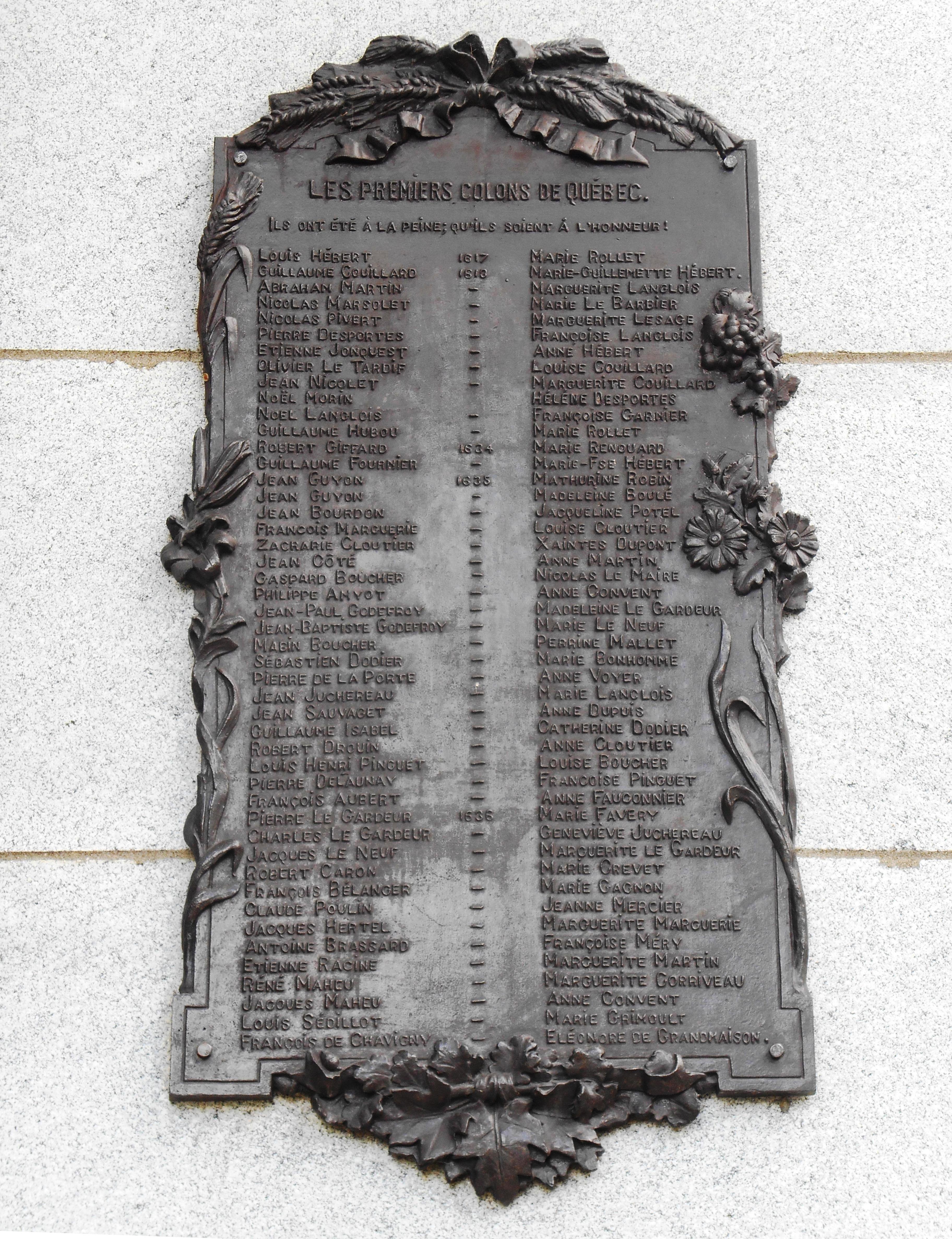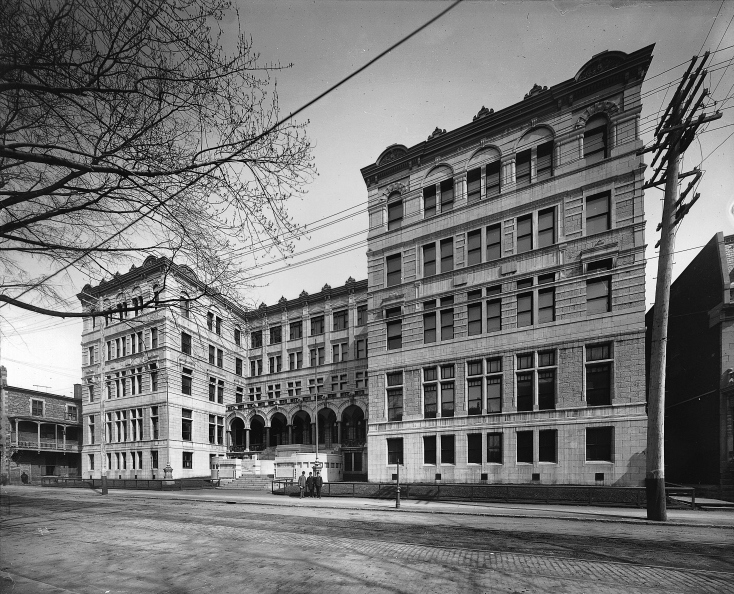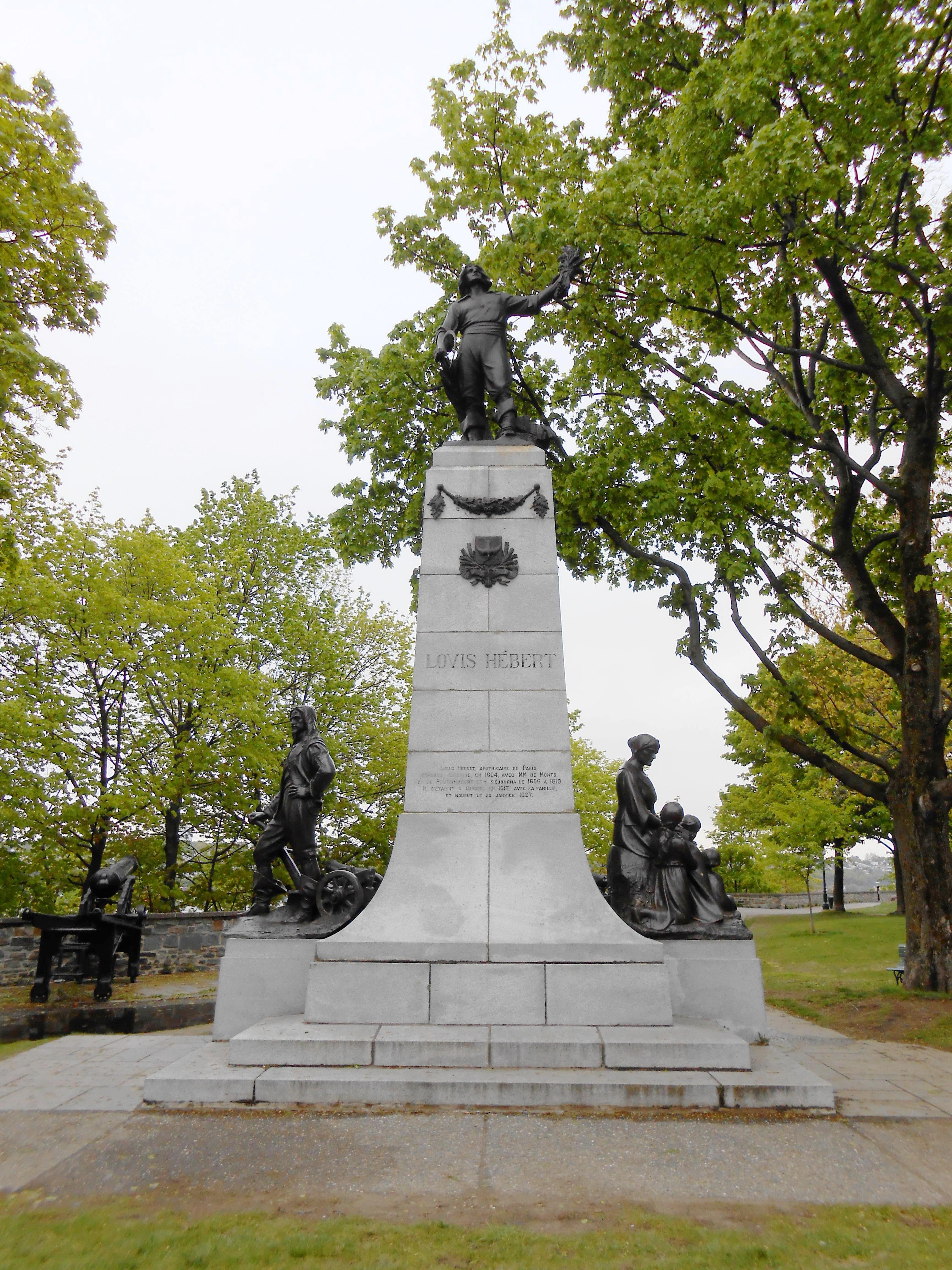|
Jean Guyon
Jean Guyon ''du Buisson'' (Bapt. September 18, 1592 – May 30, 1663) was the patriarch of one of the earliest families to settle on the North shore of New France's St. Lawrence River. Guyon made his living as a master mason and, according to Perche-born genealogist Madame Montagne, was regarded as having an excellent reputation as a mason. In 1615, he helped construct the Saint-Aubin de Tourouvre church steeple's interior stone staircase and in 1625 he was charged with the re-building of Mortagne's fortifications. Habitant in New France Guyon was from the village of Tourouvre's Saint-Aubin parish located in Chartres diocese, ancient Perche province, and present-day Normandy's Orne department. Guyon and his family emigrated from Perche province to New France on the North shore of the Saint Lawrence River near present-day Quebec city as part of the Percheron immigration movement, a pioneering group of about 300 colonists who settled in Canada in the three decades starting ... [...More Info...] [...Related Items...] OR: [Wikipedia] [Google] [Baidu] |
Beauport, Quebec
Beauport is a borough of Quebec City, Quebec, Canada on the Saint Lawrence River. Beauport is a northeastern suburb of Quebec City. Manufacturers include paint, construction materials, printers, and hospital supplies. Food transportation is important to the economy. Attractions include ''Parc de la Chute-Montmorency'' (Montmorency Falls Park), which contains a fortification built in 1759 by James Wolfe and Manoir Montmorency, the home from 1791 to 1794 of Prince Edward, Duke of Kent and Strathearn. The city's historic district contains many interesting churches and homes, including Bélanger-Girardin House, a National Historic Site of Canada where visitors can learn about Beauport's heritage. Annual events include the spring arts festival Salon de Mai and the summer Festival Folklorique des enfants du monde, a multicultural and international children's folklore festival. History Beauport was established in 1634, making it one of the oldest European-founded communities in Canad ... [...More Info...] [...Related Items...] OR: [Wikipedia] [Google] [Baidu] |
Zacharie Cloutier
Zacharie Cloutier (c. 1590 – September 17, 1677) was a French carpenter who immigrated to New France in 1634 in the first wave of the Percheron immigration from the former province of Perche, to an area that is today part of Quebec, Canada. He settled in Beauport and founded one of the foremost families of Quebec. Early life Many sources state that Zacharie Cloutier was born about 1590 in the parish of Saint-Jean, Mortagne-au-Perche, France. Cloutier was one of several children of Denis Cloutier and his first wife Renée Brière. The notary Mathurin Roussel of Mortagne called Cloutier the "family peacemaker," describing how Cloutier helped his father and brother solve a dispute involving inheritance. In the parish of his birth, Cloutier wedded Xainte (aka Sainte) Dupont, on July 18, 1616. Xainte had been born around 1595 in Mortagne to Paul-Michel and Perrine Dupont, and was the widow of Michel Lermusier. He and his family were among a group of settlers who travelled fr ... [...More Info...] [...Related Items...] OR: [Wikipedia] [Google] [Baidu] |
Heart Disease
Cardiovascular disease (CVD) is a class of diseases that involve the heart or blood vessels. CVD includes coronary artery diseases (CAD) such as angina and myocardial infarction (commonly known as a heart attack). Other CVDs include stroke, heart failure, hypertensive heart disease, rheumatic heart disease, cardiomyopathy, abnormal heart rhythms, congenital heart disease, valvular heart disease, carditis, aortic aneurysms, peripheral artery disease, thromboembolic disease, and venous thrombosis. The underlying mechanisms vary depending on the disease. It is estimated that dietary risk factors are associated with 53% of CVD deaths. Coronary artery disease, stroke, and peripheral artery disease involve atherosclerosis. This may be caused by high blood pressure, smoking, diabetes mellitus, lack of exercise, obesity, high blood cholesterol, poor diet, excessive alcohol consumption, and poor sleep, among other things. High blood pressure is estimated to account for approximatel ... [...More Info...] [...Related Items...] OR: [Wikipedia] [Google] [Baidu] |
Nervous System
In biology, the nervous system is the highly complex part of an animal that coordinates its actions and sensory information by transmitting signals to and from different parts of its body. The nervous system detects environmental changes that impact the body, then works in tandem with the endocrine system to respond to such events. Nervous tissue first arose in wormlike organisms about 550 to 600 million years ago. In vertebrates it consists of two main parts, the central nervous system (CNS) and the peripheral nervous system (PNS). The CNS consists of the brain and spinal cord. The PNS consists mainly of nerves, which are enclosed bundles of the long fibers or axons, that connect the CNS to every other part of the body. Nerves that transmit signals from the brain are called motor nerves or '' efferent'' nerves, while those nerves that transmit information from the body to the CNS are called sensory nerves or '' afferent''. Spinal nerves are mixed nerves that serve both fu ... [...More Info...] [...Related Items...] OR: [Wikipedia] [Google] [Baidu] |
Friedreich's Ataxia
Friedreich's ataxia (FRDA or FA) is an autosomal-recessive genetic disease that causes difficulty walking, a loss of sensation in the arms and legs, and impaired speech that worsens over time. Symptoms generally start between 5 and 20 years of age. Many develop hypertrophic cardiomyopathy and require a mobility aid such as a cane, walker, or wheelchair in their teens. As the disease progresses, some affected people lose their sight and hearing. Other complications may include scoliosis and diabetes mellitus. The condition is caused by mutations in the ''FXN'' gene on chromosome 9, which makes a protein called frataxin. In FRDA, cells produce less frataxin. Degeneration of nerve tissue in the spinal cord causes the ataxia; particularly affected are the sensory neurons essential for directing muscle movement of the arms and legs through connections with the cerebellum. The spinal cord becomes thinner, and nerve cells lose some myelin sheath. No effective treatment is kn ... [...More Info...] [...Related Items...] OR: [Wikipedia] [Google] [Baidu] |
Demography
Demography () is the statistics, statistical study of populations, especially human beings. Demographic analysis examines and measures the dimensions and Population dynamics, dynamics of populations; it can cover whole societies or groups defined by criteria such as education, nationality, religion, and ethnicity. Educational institutions usually treat demography as a field of sociology, though there are a number of independent demography departments. These methods have primarily been developed to study human populations, but are extended to a variety of areas where researchers want to know how populations of Social actions, social actors can change across time through processes of birth, death, and Human migration, migration. In the context of human biological populations, demographic analysis uses Public records, administrative records to develop an independent Approximation, estimate of the population. Demographic analysis estimates are often considered a reliable stan ... [...More Info...] [...Related Items...] OR: [Wikipedia] [Google] [Baidu] |
Université De Montréal
The Université de Montréal (UdeM; ; translates to University of Montreal) is a French-language public research university in Montreal, Quebec, Canada. The university's main campus is located in the Côte-des-Neiges neighborhood of Côte-des-Neiges–Notre-Dame-de-Grâce on Mount Royal near the Outremont Summit (also called Mount Murray), in the borough of Outremont. The institution comprises thirteen faculties, more than sixty departments and two affiliated schools: the Polytechnique Montréal (School of Engineering; formerly the École polytechnique de Montréal) and HEC Montréal (School of Business). It offers more than 650 undergraduate programmes and graduate programmes, including 71 doctoral programmes. The university was founded as a satellite campus of the Université Laval in 1878. It became an independent institution after it was issued a papal charter in 1919 and a provincial charter in 1920. Université de Montréal moved from Montreal's Quartier Latin to its pr ... [...More Info...] [...Related Items...] OR: [Wikipedia] [Google] [Baidu] |
Québécois (word)
(''e'') or Quebecois(e) may refer to: * Related to the Canadian province of Quebec ** most often, Québécois people, a native or inhabitant of Quebec ** any native or resident of Quebec, see Demographics of Quebec ** the French culture of Quebec * Quebec French, the variety of French spoken in Quebec * A native or inhabitant of the province's capital, Quebec City (rare in English) * ''Le Québécois'', a newspaper based in Quebec City * ''Algoma Quebecois'', a freighter launched in 1963 * ''Groupe La Québécoise'', a passenger transport company See also * French Canadian * Quebecer (other) * Quebec (other) Quebec is a French-speaking province in Eastern Canada. Quebec may also refer to: * Province of Quebec (1763–1791), a British colony in North America * Quebec City, the capital city of the province of Quebec Areas in Canada * Québec (electora ... {{disambiguation Language and nationality disambiguation pages ... [...More Info...] [...Related Items...] OR: [Wikipedia] [Google] [Baidu] |
French Canadian
French Canadians (referred to as Canadiens mainly before the twentieth century; french: Canadiens français, ; feminine form: , ), or Franco-Canadians (french: Franco-Canadiens), refers to either an ethnic group who trace their ancestry to French colonists who settled in Canada beginning in the 17th century or to French-speaking or Francophone Canadians of any ethnic origin. During the 17th century, French settlers originating mainly from the west and north of France settled Canada. It is from them that the French Canadian ethnicity was born. During the 17th to 18th centuries, French Canadians expanded across North America and colonized various regions, cities, and towns. As a result people of French Canadian descent can be found across North America. Between 1840 and 1930, many French Canadians immigrated to New England, an event known as the Grande Hémorragie. Etymology French Canadians get their name from ''Canada'', the most developed and densely populated region of Ne ... [...More Info...] [...Related Items...] OR: [Wikipedia] [Google] [Baidu] |
Louis Hébert
Louis Hébert (c. 1575 – 25 January 1627) is widely considered the first European apothecary in the region that would later become Canada, as well as the first European to farm in said region. He was born around 1575 at 129 de la rue Saint-Honoré in Paris to Nicolas Hébert and Jacqueline Pajot. He married Marie Rollet on 19 February 1601 at the Church of Saint-Sulpice, Paris. In 1606, he accompanied his cousin-in-law, Jean de Biencourt de Poutrincourt et de Saint-Just, to Acadia, along with Samuel Champlain. He lived at Port-Royal (now Annapolis, in southern Nova Scotia) from 1606 to 1607 and from 1611 to 1613 when Port-Royal was destroyed by the English deputy governor of Virginia Samuel Argall. In 1617, with his wife, Marie Rollet, and their three children– Guillaume, aged three; Guillaumette, aged nine; and Anne, aged 14 – he left Paris forever to live in Quebec City. He died there 10 years later because of an injury that occurred when he fell on a patch of ice. ... [...More Info...] [...Related Items...] OR: [Wikipedia] [Google] [Baidu] |
Louis XIV
, house = Bourbon , father = Louis XIII , mother = Anne of Austria , birth_date = , birth_place = Château de Saint-Germain-en-Laye, Saint-Germain-en-Laye, France , death_date = , death_place = Palace of Versailles, Versailles, France , burial_date = 9 September 1715 , burial_place = Basilica of Saint-Denis , religion = Catholicism (Gallican Rite) , signature = Louis XIV Signature.svg Louis XIV (Louis Dieudonné; 5 September 16381 September 1715), also known as Louis the Great () or the Sun King (), was King of France from 14 May 1643 until his death in 1715. His reign of 72 years and 110 days is the longest of any sovereign in history whose date is verifiable. Although Louis XIV's France was emblematic of the age of absolutism in Europe, the King surrounded himself with a variety of significant political, military, and cultural figures, such as Bossuet, Colbert, Le Brun, Le Nôtre, Lully, Mazarin, Molière, Racine, Turenne, ... [...More Info...] [...Related Items...] OR: [Wikipedia] [Google] [Baidu] |






